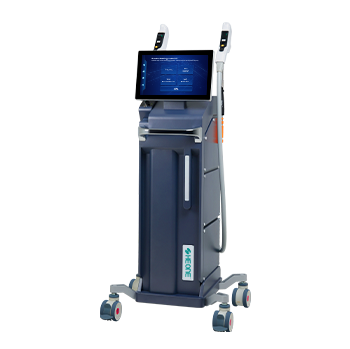With the improvement of living standards, women’s requirements for beauty are getting higher and higher, and photorejuvenation is very popular. Today we will talk about some common problems about photorejuvenation.
What does photorejuvenation do?
·Whitening and rejuvenating skin;
·Freckle removal, acne scar removal;
·Shrink pores;
·Brighten skin tone;
(5) Remove small fine lines on the face.
1.How long is a course of photorejuvenation?
A course of treatment is generally 6 to 8 times, usually once every 3 to 4 weeks; after a course of treatment, the skin can be maintained in a relatively good state; in the later stage,consolidation treatment can also be performed, and consolidation treatment is recommended according to individual circumstances.
2.Can I apply makeup immediately after photorejuvenation treatment?
Immediate makeup is not recommended, and normal makeup can be done after seven days of treatment.
3.How long does it take to see results after photorejuvenation?
After photon treatment, you can usually see the effect after 15 days, such as: the skin becomes whiter, brighter, and the pores become thinner.
4.What problems should I pay attention to after photorejuvenation?
(1) The most important thing is sun protection. Sun protection includes physical sun protection and chemical sun protection, such as applying sunscreen, using umbrellas, wearing hats, sunglasses, masks, etc.;
(2) To replenish water, apply a medical mask twice a day one week after surgery, and after a week for routine skin care, apply a moisturizing mask 2 to 3 times a week;
(3) Eat a light diet for one week after the operation, and do not eat spicy and irritating food;
(4) Do not do strenuous exercise for one week after the operation, such as sweat steaming, hot yoga, etc.
Photonic skin rejuvenation is a medical beauty project. The advantages and disadvantages of the instrument and the doctor’s experience and techniques are the guarantee of the expected effect. It is recommended to choose a regular medical beauty hospital or a regular hospital with a medical beauty department for the photonic skin rejuvenation project.
Red blood is medically called: telangiectasia, which is caused by the continuous expansion of dermal blood vessels, and manifests as filamentous, dotted, reticulated, or star-shaped red blood on the skin surface.
This type of skin is thin and sensitive, and it turns redder when it is overheated, too cold, agitated, and with sudden changes in temperature. The skin surface itself has no capillaries, so where did the red blood come from? The nutrient intake of the superficial skin depends on the spinous layer of the third layer of the epidermis of the skin to supply. Once the spinous layer cells are damaged, their ability to supply nutrients decreases, and the capillaries spontaneously expand upward in order to help the spinous layer cells provide nutrients.
The redness of the skin is a manifestation of the temporary expansion of the capillaries. After repeated expansion and then contraction, the elasticity of the capillaries themselves will gradually weaken.
Over time, capillaries lose their ability to contract back. So annoying “red blood” appeared. When the epidermis of our skin is destroyed, the capillaries that were originally under the epidermis of the skin are exposed.
To put it simply: cells in the epidermis are severely damaged. The longer the damage is, the heavier the proliferation and migration of capillaries will be, and the more serious the red blood will be.
Photon rejuvenation removes redness
Red blood is medically called: telangiectasia, which is caused by the continuous expansion of dermal blood vessels, and manifests as filamentous, dotted, reticulated, or star-shaped red blood on the skin surface.
This type of skin is thin and sensitive, and it turns redder when it is overheated, too cold, agitated, and with sudden changes in temperature. The skin surface itself has no capillaries, so where did the red blood come from? The nutrient intake of the superficial skin depends on the spinous layer of the third layer of the epidermis of the skin to supply. Once the spinous layer cells are damaged, their ability to supply nutrients decreases, and the capillaries spontaneously expand upward in order to help the spinous layer cells provide nutrients.
The redness of the skin is a manifestation of the temporary expansion of the capillaries. After repeated expansion and then contraction, the elasticity of the capillaries themselves will gradually weaken.
Over time, capillaries lose their ability to contract back. So annoying “red blood” appeared. When the epidermis of our skin is destroyed, the capillaries that were originally under the epidermis of the skin are exposed.
To put it simply: cells in the epidermis are severely damaged. The longer the damage is, the heavier the proliferation and migration of capillaries will be, and the more serious the red blood will be.










